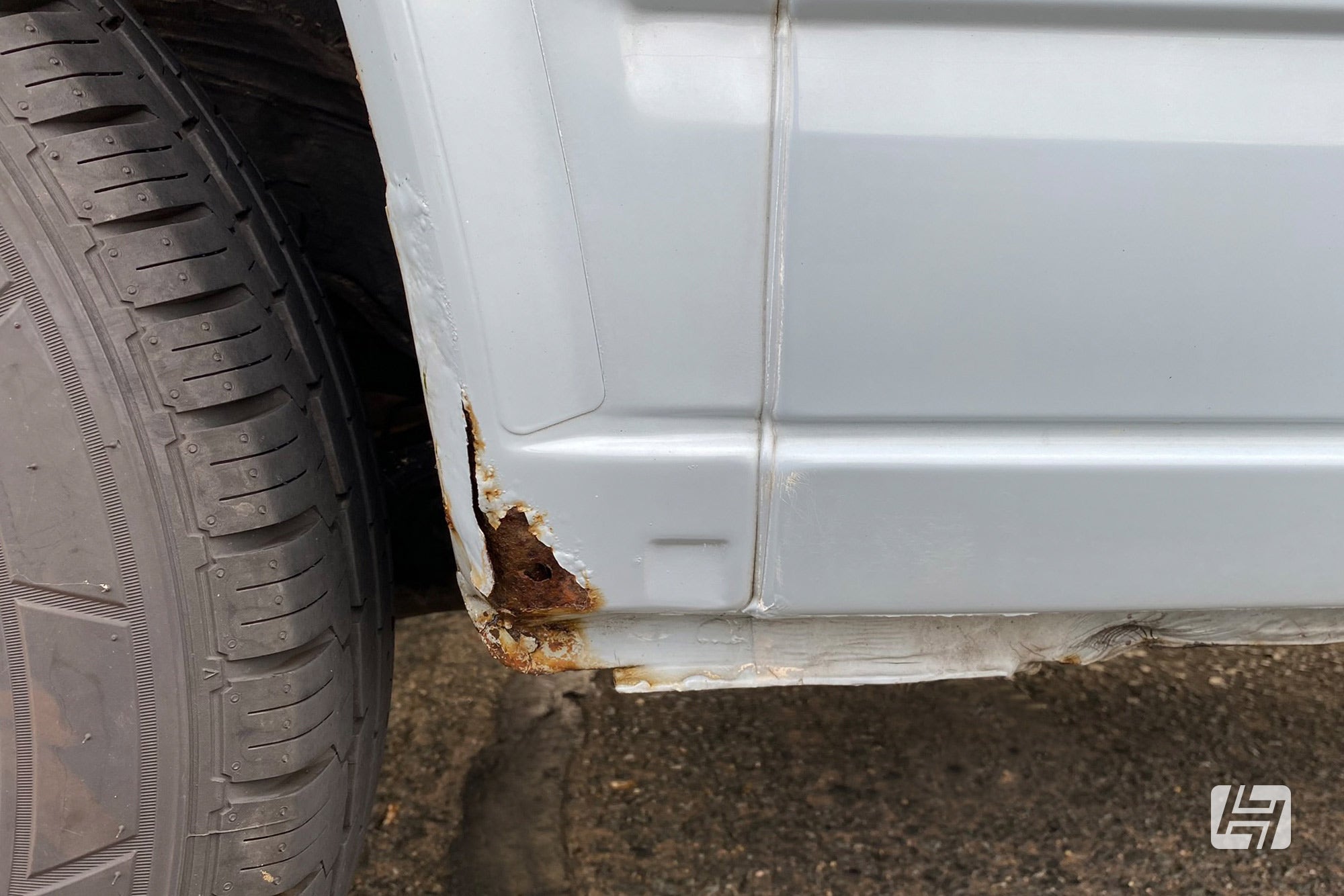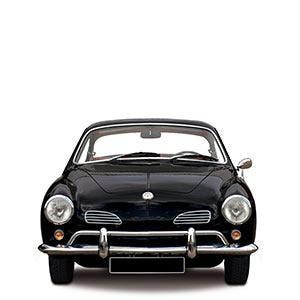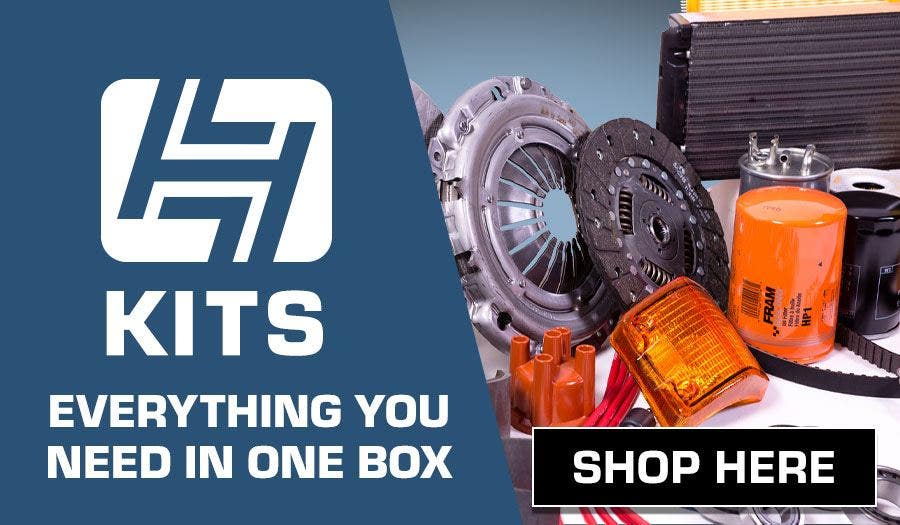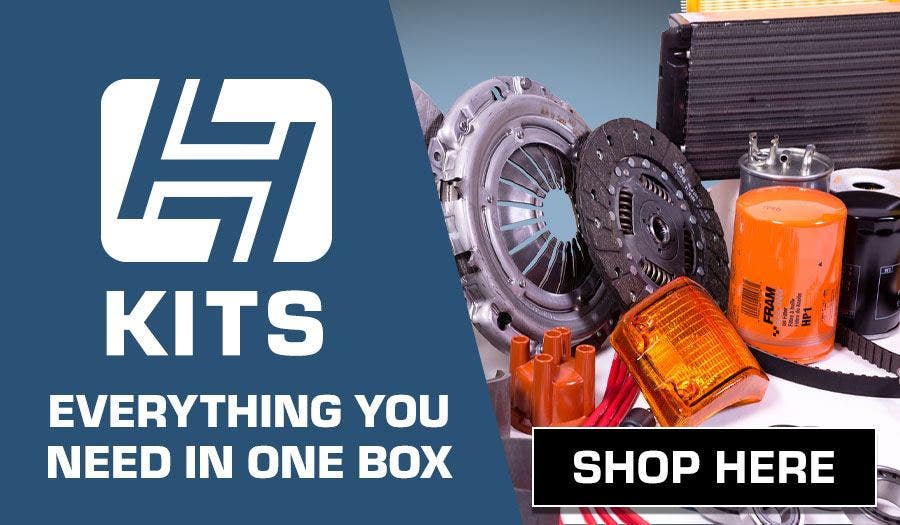VW T4 Eurovan Buying Guide
Work tool, camper van, surf bus or ultra-cool weekend plaything. There are plenty of reasons why enthusiasts love the Volkswagen T4 Eurovan. Whilst it was the first of the front engine Transporters, it still has a bit of retro charm over the more modern T5 / T6 and offers a little bit of extra refinement over the Type 25. Want to get in on the action? Read our VW Eurovan Buying Guide to find out more.
History of the VW Eurovan
The first mutterings about a VW Vanagon replacement began back in 1982, at about the same time as the water boxer engine replaced the air-cooled version. Although 6 or 7 years ahead of the official launch, Volkswagen had decided on a totally new front-engine, front-wheel-drive configuration for their new Transporter. Early drawings looked more like a Renault Espace, with huge amounts of rounded glass although Volkswagen's in-house stylists eventually settled for a design taking more cues from their passenger cars of the time. The final styling solution gained approval by VW’s board and was put before a customer clinic where it achieved an 80% approval rating. The biggest improvement over the outgoing Type 25 was in terms of practicality. Bizarrely though, considering that its British designed cockpit won a Design Council award, those involved in the customer survey saw only a marginal improvement in driver comfort over the older vehicle. Just goes to show how attached people must have been to the trusty T3! You can read our Vanagon buying guide here.

VW Eurovan Production
The first Volkswagen Eurovan broke cover in January 1990. Sure it was a big departure from the wedge-shaped T25 but it soon established a reputation for being a tough, reliable and user-friendly workhorse the world over. For those shopping in the USA, you will know the T4 better as a Volkswagen EuroVan. Predominantly built at Volkswagen's factory in Hannover, the Eurovan was also produced in Poland, Indonesia, Taiwan and Malaysia, and was available in SWB or LWB with a choice of roof heights. The range included a panel van, Eurovan, Kombi, Caravelle, single and double cab pickup and Syncro 4x4. You could also buy one that had been converted into a camper; Westfalia being the name that carries the most kudos but offerings from Holdsworth, Autosleeper and Reimo amongst others were also available. The light blue example photographed here is a more unusual Bilbo's conversion, sold new in 2000 with the 1.9 Turbo-Diesel engine. Access at the side is through a sliding door and the rear was specified with either a double-door or a tailgate option depending on the buyer's preference. A facelift to accommodate the optional VR6 lump was introduced in 1996 and featured a longer nose, but these continued to run alongside the earlier style until the close of production in 2003. Shop long nose Eurovan specific parts here.

VW Eurovan Engine Options
Petrol engine offerings in the VW Eurovan range included a 1.8, 2.0, 2.5 five-cylinder and the 2.8 12v VR6, which was also available in 170bhp 24-valve guise from 2000. The latter option is lovely but thirsty unless you get one that’s had a well-executed LPG conversion. As for the diesel, there was a 1.9D, 1.9TD and the 2.4D along with a range-topping 2.5 five-cylinder unit. The 2.5 initially produced 88bhp (identified with blue ‘i’ badge), rising to 102 from 1995 (with the ‘i’ in silver) and a stonking 151bhp from 1998, but sadly this was only on German vans with the ‘i’ appearing in red. It is the diesel models that are most abundant and of these the 2.5TDi is the most desirable, providing plenty of performance and up to 42mpg. It’s also relatively easy to convert the 88bhp unit to 102bhp by fitting a top-mounted intercooler and even 150bhp is within reach with further tuning. On the downside, it is more complex and the engine is controlled by an ECU making it pricey to fix should you have a problem.

Of the 4 cylinder diesels, the 68bhp 1.9TD is also a good bet. Granted, it’s not that quick but it is tunable and doesn’t command the premium of the 2.5. The non-turbo diesel feels sluggish and although you would think the 2.4 five-cylinder should be pretty swift, sadly it’s not.


What goes wrong with VW Eurovan engines?
All Eurovan power units are reliable as long as they have been looked after, although the 2.4D has a reputation for head gasket issues. As with any car purchase watch for oil and water contamination and signs of overheating whilst sat stationary. Because the TDi’s timing belt also drives the water pump, if the pump fails it will take out the belt at the same time. This makes timely replacement of the cambelt and water pump a priority to avoid the prospect of bent valves and snapped camshafts if it breaks.

VW Eurovan Transmission
Most Eurovans were fitted with a manual box, but you might get lucky finding a two-pedal Caravelle, Multivan or Camper should an Automatic be your preference. Manual Gearboxes are robust but check for any that jump out of gear or have dodgy synchro which could be a problem on high-milers. We stock a range of Eurovan Gearbox parts here. Because the Eurovan has a hydraulic clutch, check for fluid leaks around the pedal box. While you’re down there with the torch, check there are no cracks in the pedal box itself where the clutch master cylinder mounts, as this is another issue the Eurovan suffers from. Talking of pedal boxes, we'd thoroughly suggest the Safe T Pedal security device for ensuring your Eurovan remains where you left it.


What to look for: VW Eurovan Bodywork
Corrosion is less of an issue for the Eurovan than its older Transporter siblings, but that's not to say you shouldn't take care before handing over your cash. Common rust areas include the base of the windscreen, the wheel arches, lower sills, the bottom of the sliding door inside and out, and the area around the fuel filler flap. Whilst all of these jobs are relatively straight forward for a professional to tackle, by the time you have paid their labour, sourced the necessary Eurovan repair panels and had the relevant areas repainted you may have spent considerably more than first expected. While serious structural rot is unlikely there’s no harm inspecting the inner wings, chassis and floor pan. Rust can also take hold around the rear cross member, just above where the rear springs are.




Watch out for the Eurovan Sliding Door
The sliding mechanism for the side door should be smooth and even. The door can drop out if the top rail is worn so lift the door up and down to check for any play. There is some adjustment available to get it fitting properly, but it should always sit flush when closed.

Are VW Eurovan Brakes good?
There are no real brake problems to beware of on the Eurovan, so be guided by what you can see. If the vehicle has alloy wheels fitted it'll be much easier to check the state of play with Eurovan brake discs, brake pads and brake hoses. The all-covering hub caps will need removing to offer visual access on vans fitted with steel wheels, alternatively, you'll be lying on your back with a torch! Test the brakes on a quiet piece of road and ensure it pulls up straight. A sticky rear caliper is a common fault should you find the vehicle pulling one way or the other when coming to a halt. The good news is a replacement Eurovan brake caliper is relatively inexpensive, and shouldn't take your chosen technician (or you) too long to fit. Tie it in with a brake fluid change and a set of hoses for good measure. Head for a hill and make sure the handbrake is effective; the cable can stick in its outer sleeve if a van’s been left standing for a while. A new front to back Eurovan handbrake cable is circa $40 and the rearmost part around $10 per side.

What should you know about VW Eurovan Suspension and steering?
Does the vehicle drive as you'd expect, given its overall condition? It might have shiny paint, expensive wheels and posh seats but if the previous owner has neglected the running gear your holidays could be horrific and you may as well wire your wages straight to a chiropractor! Don't be embarrassed to check the vehicle over, even if you feel the seller knows more than you about cars (they don't know that). Keep them talking while you do what you need to do - ask about trips away or what they do for work if things get too technical for you.

Uneven tyre wear indicates tired suspension bushes or could point to a van that’s had its geometry unsettled by a shunt. Knocks or clunks on rough road surfaces will usually indicate worn bottom ball joints, drop links or anti-roll bar bushes. Meanwhile, noises from the rear is most likely the trailing arm bushes. Road noise will be significantly higher in an empty commercial vehicle than a kitted out campervan. Power steering was an option initially, although later vans should have it as standard. Listen for groans or other nasty noises as you turn from lock to lock and check the fluid to ensure there have been no leaks. Don't be fooled by the fact that this Transporter is front-engined and watercooled. Whilst relatively modern, the Eurovan is a van at heart and lacks the steering and suspension refinement of the T5 and T6 incarnations.

Eurovan Interior
The 4th generation Transporter, as with its predecessors had the option of two single seats, or a single and double in the cab. If you are looking at a Caravelle or Camper model you will probably find these to be of the 'Captains Seat' variety with armrests and also the potential to swivel.

Front seat swaps aren't uncommon in the Eurovan world, so don't let that put you off. If the new chairs are comfy, look nice and are mounted securely you'll likely find they are an improvement over the classic Inca-clad commercial seats that many had as standard. Depending on the Eurovan in question you may find a bench-type seat in the middle or two single flip-down seats like this Bilbo's conversion in the back. The most common, however, especially if you are shopping for a day van/camper is a rock n' roll bed sitting over the rear wheels.


Eurovan Electrics
As we advise with all potential vehicle purchases, spend some time making sure everything works as it should while the owner is present. Trying to diagnose electrical niggles can be time-consuming and annoying, especially if you paid full price for your new toy, so best check them first. Eurovan instrument clusters have a voltage regulator that can play up causing erratic temperature and fuel readings, though later models seem to suffer less. When it comes to staying warm in winter or cool in the summer the vast majority of Eurovans only have a fan speed, temperature control and direction dial fitted to the dash. Air Conditioning was an option, although the add-on price put many first time buyers off. Be prepared to act fast and dig deep if you find one for sale and that is what you dream of, but don't discard the rest of our advice just for a nice cool cabin.


Cab door wiring is prone to chafing and is a common point of failure leading to issues with speakers, electric windows, Eurovan mirrors and central locking. Double-check all the lights work and be aware of an appetite for brake light switches. Check how the key feels in the ignition. Does the dash take time to 'light up' or worse still the van keep running once you have taken the key out? Eurovan Ignition switches are cheap to replace but a worn one could cause real headaches. Negotiate a few quid off and order a new one up ASAP if those symptoms show up.

Should I buy a modified VW Eurovan?
The VW Eurovan Transporter has a huge following and plenty of owners have modified their vehicles with additional style and accessories. Don't let the word modified put you off completely, but ask questions and proceed with caution if the seller laughs off a terrible ride or ultra-low stance without explaining more about how or why they have done it. Naturally, a lowered Eurovan will be a little bumpier, but done right it shouldn't sound like a bag of spanners or catch the tyres on the arch at every turn. Planning a ride height reduction on your future T4 purchase? Check out our range of top quality Eurovan suspension kits here.

Plenty of Eurovan owners chose to bolt-on alloy wheels to their buses, but not all of them do so with an understanding of how much heavier a Eurovan is over the car they sourced the wheels from. This is especially important if carrying extra weight, either as a trades person or with a full camping interior fitted. Inferior wheels can and do crack. We offer a selection of load rated VW Eurovan alloy wheels here should you feel sourcing something new and approved is best.



How much is a VW Eurovan?
There are Eurovan vans changing hands for a few hundred dollars but these are generally tatty, high mileage examples, with serious known faults. If you are mechanically minded and looking for a project you could have your pick for less than a grand on eBay. Do factor in the cost of the Eurovan parts to fix any suggested issues and allow for hidden surprises though. Mechanical stuff is simple to change, so buy on bodywork condition where possible. We'd suggest allocating $3000 to go shopping for a VW Eurovan with a valid MOT and a good chance of getting you home. At this price you'll have a choice of panel vans, a few DIY converted day-vans, high mileage or older Caravelle and the possibility of an unloved camper conversion too.

If you are in the market for a decent professionally built camper van to take the family away you'll need to earmark at least $8k as your budget, and consider spending into the teens for the lower mileage, 2.5 versions. Should you fancy the space and refinement of a Eurovan Coachbuilt campervan, they vary between $10-$20k depending on age, engine and condition.

Verdict
The best Eurovans tend to be the ones that haven’t been fiddled with; a plumber or electrician’s vehicle that’s been washed on their drive at weekends and dropped in at a local VW specialist or main dealer for regular servicing, as the service booklet has demanded. Avoid the ratty, rotten ones that have already been modified unless that's really what you are after. The eager 2.5TDi is an obvious choice, but there is a premium to pay and if things go wrong it will be more expensive to fix. With that in mind, the 1.9TD is perhaps a better bet plus it can also be run on veg/biofuel should you wish. Buy wisely and you'll enjoy the Eurovan experience to the full. There is a huge clan of others that have done just that and they haven’t looked back since. Happy Eurovan hunting, Ian / Andy




 Bug
Bug
 Karmann Ghia
Karmann Ghia
 Bay Bus
Bay Bus
 Vanagon
Vanagon
 Eurovan
Eurovan
 Transporter T5
Transporter T5
 Rabbit Mk1
Rabbit Mk1
 Golf Mk2
Golf Mk2


 911
911
 996
996
 997
997
 986 Boxster
986 Boxster
 987 Boxster
987 Boxster
 912
912
 944
944
 924
924


